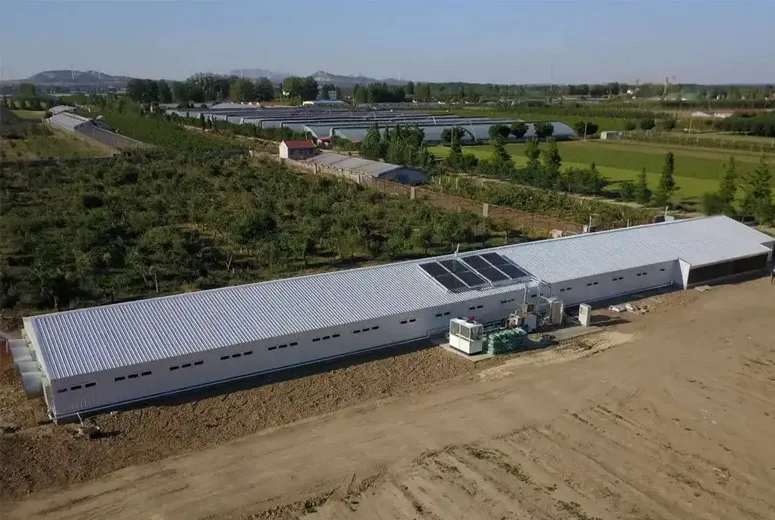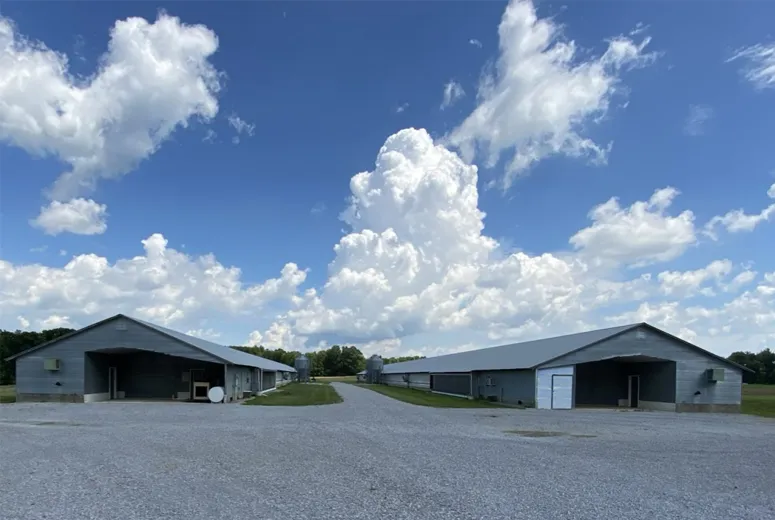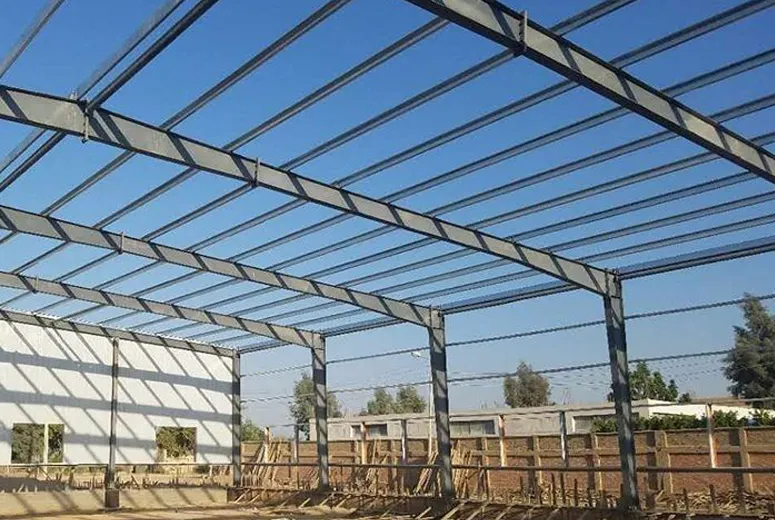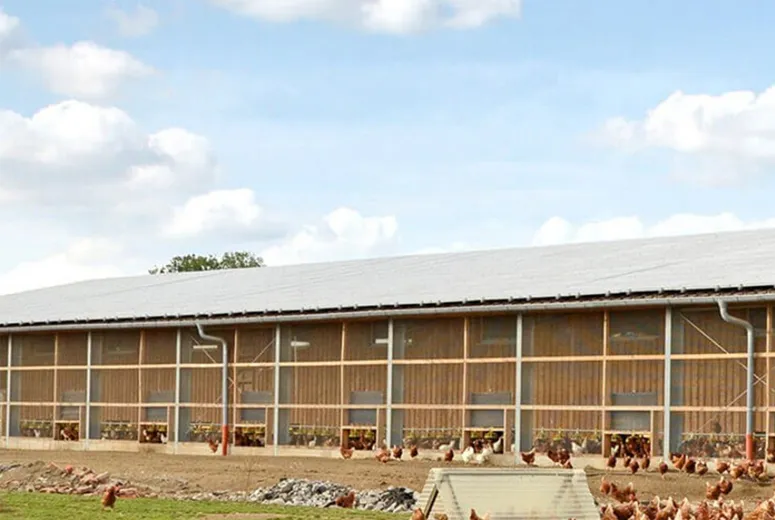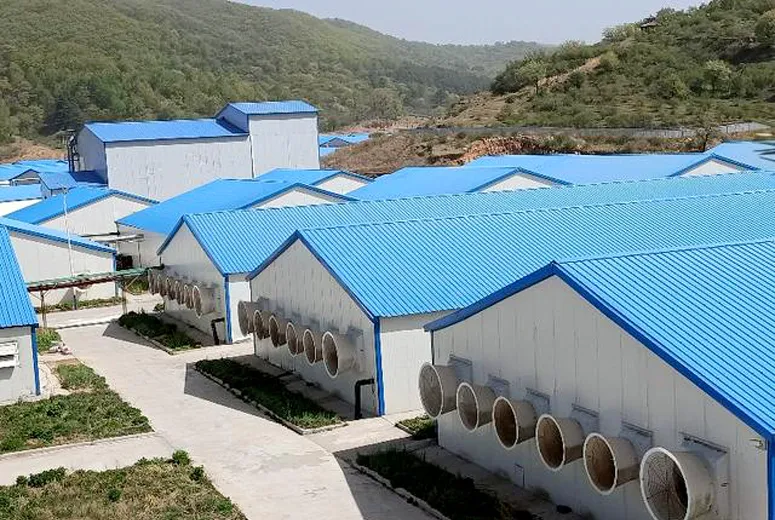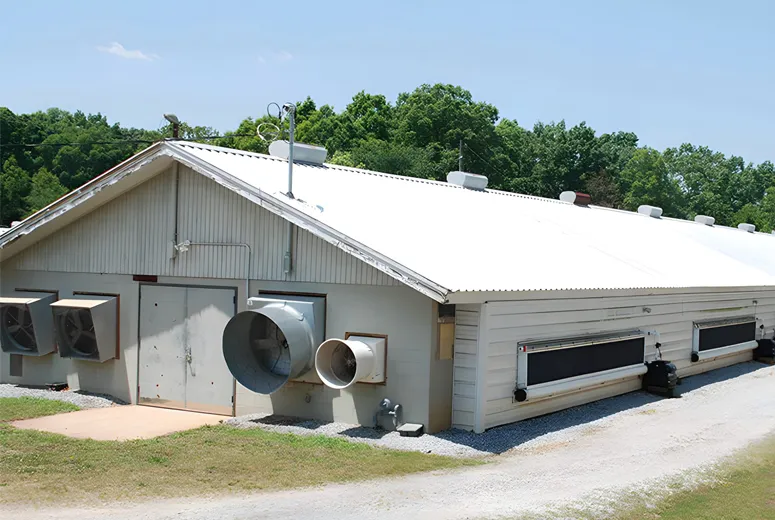Steel structure poultry houses are modern and efficient solutions for raising poultry, offering durability, cost-effectiveness, and optimal conditions for livestock. These structures are designed to meet the specific needs of poultry farming, providing a controlled environment to ensure the health and productivity of the birds.
1. Durable and Long-Lasting
Steel structure poultry houses are built using high-quality steel materials that are resistant to corrosion, pests, and extreme weather. This durability ensures that the structure lasts for many years with minimal maintenance, reducing long-term costs.
2. Customizable Design
These poultry houses can be customized to suit various farming requirements, including size, layout, and features. They can incorporate ventilation systems, insulation, lighting, and automated feeding systems, ensuring a comfortable environment for the poultry and improving operational efficiency.
3. Quick Construction
Prefabricated steel components enable faster assembly compared to traditional construction methods. This reduces labor costs and minimizes downtime, allowing farmers to start operations sooner.
4. Hygienic and Easy to Clean
The smooth surfaces of steel structures make them easy to clean and disinfect, which is crucial in maintaining biosecurity and preventing the spread of diseases among the flock.
5. Energy Efficiency
Steel structure poultry houses can be equipped with insulation and energy-efficient systems to regulate temperature and lighting. This not only enhances poultry health but also reduces energy consumption, contributing to cost savings.
6. Cost-Effective
Despite the initial investment, steel poultry houses are cost-effective in the long run due to their durability, low maintenance requirements, and ability to optimize poultry farming operations.
In conclusion, steel structure poultry houses combine durability, efficiency, and modern design to support the needs of poultry farmers, offering a sustainable and practical solution for large-scale farming.
What is the Intensive System in Poultry?
The intensive system in poultry farming refers to a highly controlled and efficient method of raising poultry, typically involving large numbers of birds kept in confined spaces with optimized conditions. This system is designed to maximize productivity, reduce costs, and ensure consistent outputs of eggs, meat, or both.
Core Features
In an intensive system, poultry is housed in specialized structures such as cages, sheds, or environmentally controlled buildings. These spaces are equipped with modern systems for feeding, watering, ventilation, and waste management. Birds are provided with optimal conditions for growth and production, including regulated temperature, humidity, and lighting.
Advantages
The intensive system allows for higher stocking density, meaning more birds can be raised in a smaller area compared to free-range or semi-intensive systems. This results in increased productivity and efficiency. Automated systems reduce labor costs and ensure uniform feeding and care. Additionally, the controlled environment minimizes exposure to predators and harsh weather conditions, contributing to better survival rates and overall health.
Challenges
While the intensive system offers high productivity, it also comes with challenges. The confinement of birds can lead to stress, reduced welfare, and increased risk of disease outbreaks. Proper biosecurity measures and regular monitoring are essential to mitigate these risks.
Applications
The intensive system is widely used in commercial poultry farming for broilers (meat production) and layers (egg production). It is especially suitable for large-scale operations where efficiency and consistency are critical.
In conclusion, the intensive system in poultry farming is a highly efficient approach that prioritizes productivity and control. While it has some challenges, it remains a cornerstone of modern poultry production worldwide.
What is the Best Structure for Poultry Farming?
The best structure for poultry farming is one that ensures the health, productivity, and welfare of the birds while optimizing costs and operational efficiency. Poultry farming structures vary based on the farming system (intensive, semi-intensive, or free-range), but modern poultry houses made of steel or concrete are considered the most effective.
Core Features of an Ideal Poultry Farming Structure
1. Durability and Stability
The structure should be strong enough to withstand environmental factors such as wind, rain, and extreme temperatures. Steel structures are particularly popular due to their durability, resistance to pests, and minimal maintenance requirements.
2. Ventilation and Climate Control
Proper ventilation is essential to maintain air quality and regulate temperature and humidity. This reduces heat stress and prevents respiratory diseases. Advanced poultry houses often include automated systems for ventilation, cooling, and heating to create an optimal environment year-round.
3. Space Optimization
Adequate space per bird is crucial to avoid overcrowding and stress. Structures should be designed to allow for easy movement, feeding, and access to water. For intensive systems, multi-tiered cages or deep-litter housing are commonly used.
4. Biosecurity Features
The structure should minimize the risk of disease transmission. Features like controlled entry points, easy-to-clean surfaces, and effective drainage systems contribute to biosecurity.
5. Cost-Effectiveness
Prefabricated steel poultry houses offer a cost-effective solution due to their quick assembly and low maintenance costs.
Conclusion
The best structure for poultry farming combines durability, effective climate control, optimal space, and biosecurity measures. Steel poultry houses are particularly well-suited for modern farming, offering a balance between efficiency, cost, and bird welfare.
Built to Last: Steel Frame Chicken Coop
Raising poultry successfully requires more than just the right feed or flock management—it demands secure, sanitary, and long-lasting housing. A steel frame chicken coop offers exactly that, outperforming wood or plastic coops in nearly every measurable way. At Hebei HongJi Shunda Steel Structure Engineering Co., Ltd., we design and manufacture steel poultry housing that meets the real-world demands of both small backyard keepers and large-scale commercial farms.
Traditional coops made from wood are prone to common failures: they rot over time, warp under moisture, and easily become breeding grounds for mites, lice, and bacteria. In contrast, our galvanized steel frame chicken coops are engineered for maximum hygiene and resilience. Steel resists rust, mold, and pest infestation, making it easy to clean with basic water or pressure washing—an essential feature for biosecurity-conscious farmers.
Built to endure heavy wind, snow, and even predator attempts, our steel frames offer unmatched peace of mind. The structural stability ensures the coop remains upright and functional for decades, not just seasons. The open interior framing also allows for proper ventilation, which helps regulate temperature and humidity—vital factors for preventing respiratory issues and promoting egg production in poultry.
We understand that every poultry operation is different, which is why we offer modular and fully customizable designs. Want side-access egg collection boxes? Need built-in insulation for colder climates? Prefer elevated flooring to enhance drainage? We can integrate all of these elements directly into the design. Entry points, nesting box layout, feeder systems, and even automated ventilation can all be tailored to suit your workflow and climate.
Our steel coops are designed for fast assembly and minimal maintenance. Whether you’re expanding an existing setup or launching a new farm, the prefabricated components allow for efficient on-site installation—saving you time and reducing labor costs. And because all frames are fabricated under strict quality control in our 52,000-square-meter facility, you can expect consistent build quality across every unit.
For poultry farmers who prioritize flock health, operational efficiency, and structural integrity, a chicken coop steel frame is more than just housing—it’s an investment in sustainability, performance, and long-term success. Built to last and built for livestock, it’s the smart solution that grows with your business.
Inside a Modern Steel Structure Factory
Commercial poultry farming today demands more than just pens and feeders. Behind every efficient operation is a steel structure factory—purpose-built for processing, feed storage, incubation, or packaging. These facilities represent the backbone of industrial-scale poultry production.
A steel structure factory provides high-clearance interiors and wide, column-free spans that allow machinery, conveyors, and workstations to operate efficiently. Ventilation and lighting systems are easily integrated, while the steel shell offers superior fire resistance and structural endurance compared to traditional concrete or brick builds.
Because poultry processing involves moisture, temperature control, and hygiene, these steel facilities are designed to meet strict industry standards. Their smooth surfaces are easier to sanitize, and their modular designs support rapid expansion or reconfiguration as demand grows.
For companies scaling their poultry business, investing in steel infrastructure isn’t just smart—it’s essential. These buildings deliver efficiency, safety, and flexibility—all under one roof.






